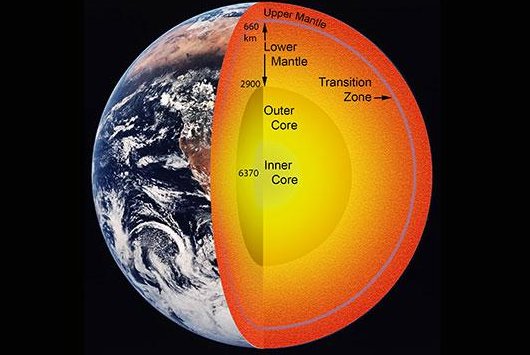Schematic cross section of the Earth’s interior. A study by Steve Jacobsen and Brandon Schmandt of Northwestern University used seismic waves to find magma generated at the base of the transition zone, around 410 miles deep. Dehydration melting at those conditions, also observed in the study’s high-pressure experiments, suggests the transition zone may contain oceans worth of H2O dissolved in high-pressure rock.
WASHINGTON, June 13 (UPI) -- It was right there all along -- a massive reserve of water buried deep in the Earth.
Scientists have long theorized a mass of hidden water was somewhere below, but a group of geologists from Northwestern University are the first to offer evidence.
The geologists found the water while studying a vast stretch of Earth's mantle called the transition zone. The vast underground region extends across much of North America. The water, enough to fill the oceans three times over, is hiding in a mineral called ringwoodite some 400 miles beneath Earth's crust.
Steve Jacobsen, who co-authored the study detailing the discovery, says the water explains a lot about why our planet looks and acts the way it does.
"Geological processes on the Earth's surface, such as earthquakes or erupting volcanoes, are an expression of what is going on inside the Earth, out of our sight," Jacobsen said.
"I think we are finally seeing evidence for a whole-Earth water cycle, which may help explain the vast amount of liquid water on the surface of our habitable planet," he explained. "Scientists have been looking for this missing deep water for decades."
By studying seismograph records and conducting a number of lab experiments that replicated deep-Earth pressures and their effects on rock, Jacobson was able to show that water could be fused into and trapped by the crystalline structure of ringwoodite.
The study was published this week in the journal Science.















